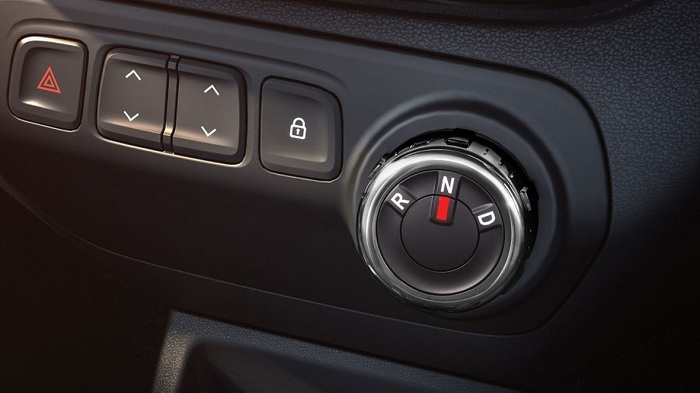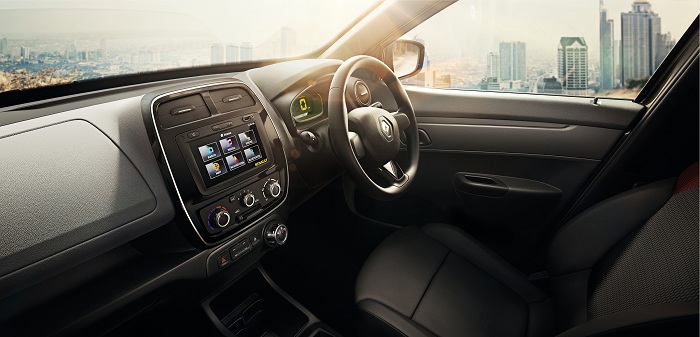For me, the idea of an affordable new car acquisition is commendable, especially from manufacturers with as good a product portfolio as Renault and Nissan. So why do I find myself in an aw-Kwid position? A no-Go zone, if you will. Allow me to explain my thought process with my impressions of the Kwid AMT, the automatic version of Renault's current best-seller locally.
What is an AMT?
In an era of advanced dual-clutch gearboxes, well-sorted torque converters and even respectable CVT transmissions, an AMT, which stands for automated manual transmission, is like the guy who wears a pair of Air Max's with his suit to a black tie event, it simply doesn't make sense.

Instead of a regular gear knob, or stalk if you're of the Mercedes-Benz persuasion, the Kwid AMT makes use of a dial below the ventilation settings and allows for "R" for reverse, "N" for neutral and "D" for drive. Sounds rather normal, doesn't it? Except it really isn't; to start the car, you must turn the ignition on, put your foot on to the brake pedal, ensure it's in neutral and wait for around three seconds before starting the engine.
Driving Kwid
Once you're done faffing with the starting procedure and the rather willing 50kW/91Nm 1.0-litre motor is idling away, the fun really starts. Engage your desired motion of travel, and either way you're in for a jerky experience. Out on the road, the first gear change through the five forward cogs was met with what can only be described in smartphone lingo "LOL".
I have never driven a car with as hesitant a gear change as the Kwid AMT. For first-time buyers this might not be quite as bad, but for anyone who has driven anything remotely modern, the gear changes are simply too slow.
To give you a real-world example during my tenure with the car, I was in a typical Johannesburg traffic jam one morning , where I found myself at the front of the queue at an intersection where I was given the heaven-sent green arrow, I leap at the opportunity, as the guy behind me in a massive bakkie.

For the first half of my crossing all was well, and then, the Kwid decided to change gear, safe to say I almost had a double cab parked in the Kwid's boot, which at 300-litres, is one of the three things I actually like about the car. The same goes for overtaking and zipping across an intersection, as you simply have no confidence to do so with that gearbox. Compounding the gearbox issues further, is the Kwid’s one-star safety rating, which left me decidedly unhappy about zipping around town.
Having driven the manual Kwid before, I knew what to expect on the motorway. You see, the Kwid was designed and developed for India, a country where most of the population are migrating from scooters and indeed, where congestion and poor road surfaces necessitate the Kwid's 180mm of ground clearance and indeed, where few exceed 100km/h.
South Africa is different; we have expansive roads and a large highway network where people often exceed 100km/h. The highway is not a great place for a Kwid; any crosswind disturbs it while at the national speed limit, it lacks any sort of confidence-inspiring body control.
The good, the bad and the ugly
The aforementioned boot, the relatively willing engine in combination with the sub-one-ton kerb weight and seven-inch touchscreen infotainment system are all plus points for the Kwid. The other nicety is the fact that you can get a Kwid for around R2 000 per month, with a year's free insurance thrown in.
This is a deal that is hard to ignore, and or many first time buyers, this must sound like a bargain. But as a journalist, I simply cannot recommend this car. Besides my own experience, I am part of a few social media groups, some of which are Renault-related and besides the odd positive remark, I see mostly negative ownership reviews of the Kwid.
I feel that people are lured by its low price and indeed, it's relatively practical packaging, but its lack of essential safety equipment, its clumsy gearbox and instability at speed makes the Kwid impossible for me to approve of.
There's a safer, better-specified Kwid made for the Brazilian market, but the added safety features would likely inflate its price tag, taking the Kwid closer to its bigger and better stablemate, the Sandero.
Price
Kwid 1.0 Dynamique AMT: R147 900

















